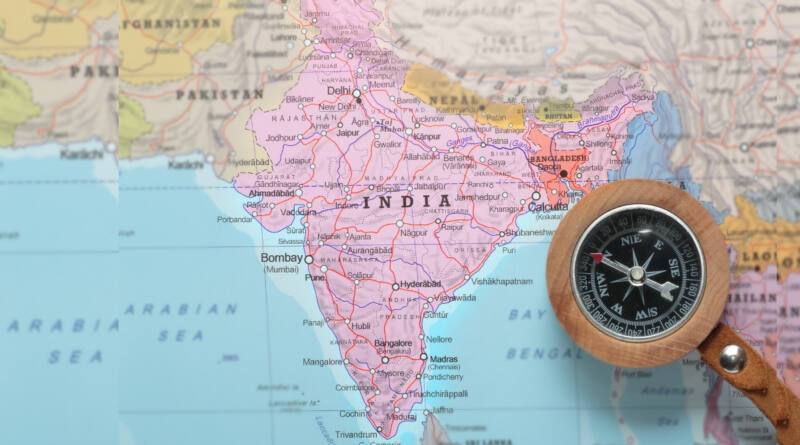Is India A Tempting Destination To Do Business Now?
India is the fastest-growing economy among G20 economies.
India’s economic trajectory through 2024 tells a fascinating story, establishing the country as the fastest-growing G20 economy. Forecasts predict that GDP growth will reach 6.5 percent for fiscal years 2024–25 and rise to 7 percent in 2026. S&P Global expects that India will surpass China’s growth forecast, and even the International Monetary Fund (IMF) anticipates that India will surpass Japan and Germany as the world’s third-largest economies by 2027, with a GDP over US$5 trillion.
With a market value of US$3.989 trillion this year, India’s stock market has risen to become the seventh largest in the world. At the end of November, India’s Nifty 50 index (up 16 percent) surpassed Hong Kong’s Hang Seng index (US$3.984 trillion). Analysts predict that in 2024, banking, healthcare, and energy will outperform, while consumer goods, utilities, and chemicals will lag behind.
India has now reached the S-curve’s key phase, which is marked by a dramatic increase in urbanisation, industrialization, household income, and energy consumption. This period often lasts several decades and is characterised by tremendous expansion in these areas.
Factors influencing India’s positive economic forecast for 2024
- Stable economic fundamentals: India’s GDP of US$3.75 trillion places it as the world’s fifth-largest economy. The Reserve Bank of India’s forecast of reaching $5 trillion by 2027 reflects a continuing, increasing trend. According to S&P Global Ratings, India’s economic development prospects would remain strong in the medium term, with GDP predicted to expand by 6 to 7.1 percent over the fiscal years 2024–2026.
- A thriving industrial manufacturing industry: The industrial manufacturing sector has grown significantly, drawing major global manufacturing and technological titans. Manufacturing has been revitalised by state industrial policies and incentives, along with successful production-linked incentive (PLI) systems, with noteworthy success stories like Apple and Foxconn.
- Infrastructure and connectivity: The government’s commitment to infrastructure development, which includes large expenditures in logistics and construction, positions India as a crucial player in global supply chains. Strategic attempts to cut logistical costs and focus on regional connectivity help to ensure long-term economic prosperity.
- Expansion beyond China: India’s manufacturing programmes dovetail with the ‘China Plus One’ strategy, drawing investments from corporations looking to expand beyond China. Leading international corporations have established local subsidiaries and contracted electronics manufacturing services to Indian enterprises.
- Ease of doing business: Reforms to the bureaucracy, such as digitising regulatory processes, contribute to a business-friendly climate.
- Resilient trade and services export industries: Despite difficulties attracting foreign direct investment in the face of global uncertainty, India’s commerce and services export sectors remain solid. By the end of 2023–24, it is predicted that service exports will surpass $400 billion, showcasing the country’s resilience in the face of geopolitical shocks. India is also pursuing full free trade agreements with key markets such as the United Kingdom, Australia, the Gulf Cooperation Council, and the European Union.
- Positive growth sectors: digitalization, sustainable production and infrastructure, trade facilitation, expanding manufacturing capacity, semiconductors and technology R&D, and financial sector growth are key growth areas for India in 2024.
- Young demographic advantage: India’s position as the world’s most populated country, with a median age of 28.2 years, contributes to the country’s economic vigour. Domestic demand recovery, particularly in private consumption and household expenditure, supports corporate development ambitions.
- Rise of non-metropolitan hubs: The availability of talent and connectivity to metropolitan majors has resulted in the rise of Tier-2 and Tier-3 cities in India (as defined by population parameters), allowing service and manufacturing multinational corporations to establish themselves in more cost-effective locations. This has had a good impact on the regional economy.
- India ranks 16th on the FDI Confidence Index for 2023 and is the world’s fourth-largest retail market. Discretionary spending power is increasing, with India’s average per capita income above US$2000 and expected to hit US$12,000 by 2047. The large middle-class and underserved consumer base in non-metropolitan cities piques the interest of several international retail conglomerates looking to expand into new markets. Branded products, such as fashion, cosmetics, jewellery, footwear, timepieces, food and beverage (F&B), and furniture, are growing in popularity and becoming necessary lifestyle items for both business and pleasure.
- Emerging sectors and dedication to sustainability: India’s emphasis on emerging industries such as healthcare, fintech, renewable energy, electric vehicles, information technology, and semiconductor manufacturing is in line with global trends. A commitment to decarbonisation and attaining 500 GW of renewable capacity by 2030 demonstrates a forward-thinking strategy.
- Corporate sustainability and ESG issues: Sustainability and environmental, social, and governance (ESG) factors are gaining traction in the corporate sector, and they help to promote responsible and ethical business practices. Green technology skills are becoming increasingly important, producing jobs and promoting growth in the green business. Currently, ‘Business Responsibility and Sustainability Reporting by Listed Businesses’ (BRSR) applies to India’s top 1000 listed businesses (by market value). Also, the BRSR Core requires the top 150 listed companies in India to provide assurances on 49 core indicators that are important to the business. This applies to the fiscal years 2023–24 and 2024–25.
- Policy emphasis on education reforms and skilling efforts tackles the changing nature of occupations, preparing the huge youthful demographic cohort for future problems.
- State stability and investment opportunities: While the 2024 federal elections introduce uncertainty, states with non-renewable local governments, such as Karnataka, Tamil Nadu, Telangana, Uttar Pradesh, Gujarat, and Maharashtra, present appealing investment opportunities.
- Hot sectors for India in 2024: Emerging industries such as battery energy storage, green hydrogen, biotechnology, clean mobility, food processing, AVGC (animation, visual effects, gaming, comics), and semiconductor chip manufacturing are encouraging foreign companies to consult local experts to assess whether their business lines align with promoted economic activity in state industrial policies and thus tap key fiscal incentives. Given India’s aim to decarbonise and reach 500 GW of renewable energy capacity by 2030, associated sectors would seek foreign investments and expertise. Healthcare and insurance, fintech, renewable energy and climate tech, electric vehicles and automobiles, IT and services, real estate and infrastructure, fast-moving consumer goods (FMCG), logistics, R&D, global capability centres, and artificial intelligence (AI) are among the key industries enticing foreign investors in India in 2024.
Several sources anticipate that the world economy will undergo numerous key developments in 2024:
- India’s Economic Outlook: According to the Associated Chambers of Commerce and Industry of India (Assocham), India will continue to be the fastest-growing major economy in 2024, with GDP growth of 7.6% or higher. This puts India in an advantageous economic position on the world stage.
- Areas to Watch: According to experts, various areas in India are worth considering for investment in 2024. These sectors, which include GDP growth, good corporate profitability, and promising sectors, are likely to contribute to robust economic expansion.
- Global Economic Trends: The forecast for 2024 is mixed on a global basis. While there is hope, there are concerns about future geopolitical tensions and the status of key economies such as the United States and China, which could lead to a further slowing of the global economy.
- Economic Transition: Analysts predict that 2024 will be a transitional year, with adjustments and alterations in the economic landscape. These transformations may have an impact on numerous aspects of the Indian and global economies.
- Positive Outlook: Experts predict that the Indian economy will experience robust growth of over 7% in 2024, which is expected to continue into fiscal year 2025.
Despite India’s bright spot in the global economy, with excellent GDP growth estimates for 2024, analysts project that global economic concerns and changes will impact the commercial and economic landscape in the following year. To make educated judgements, investors and businesses should keep a careful eye on these trends and developments.




